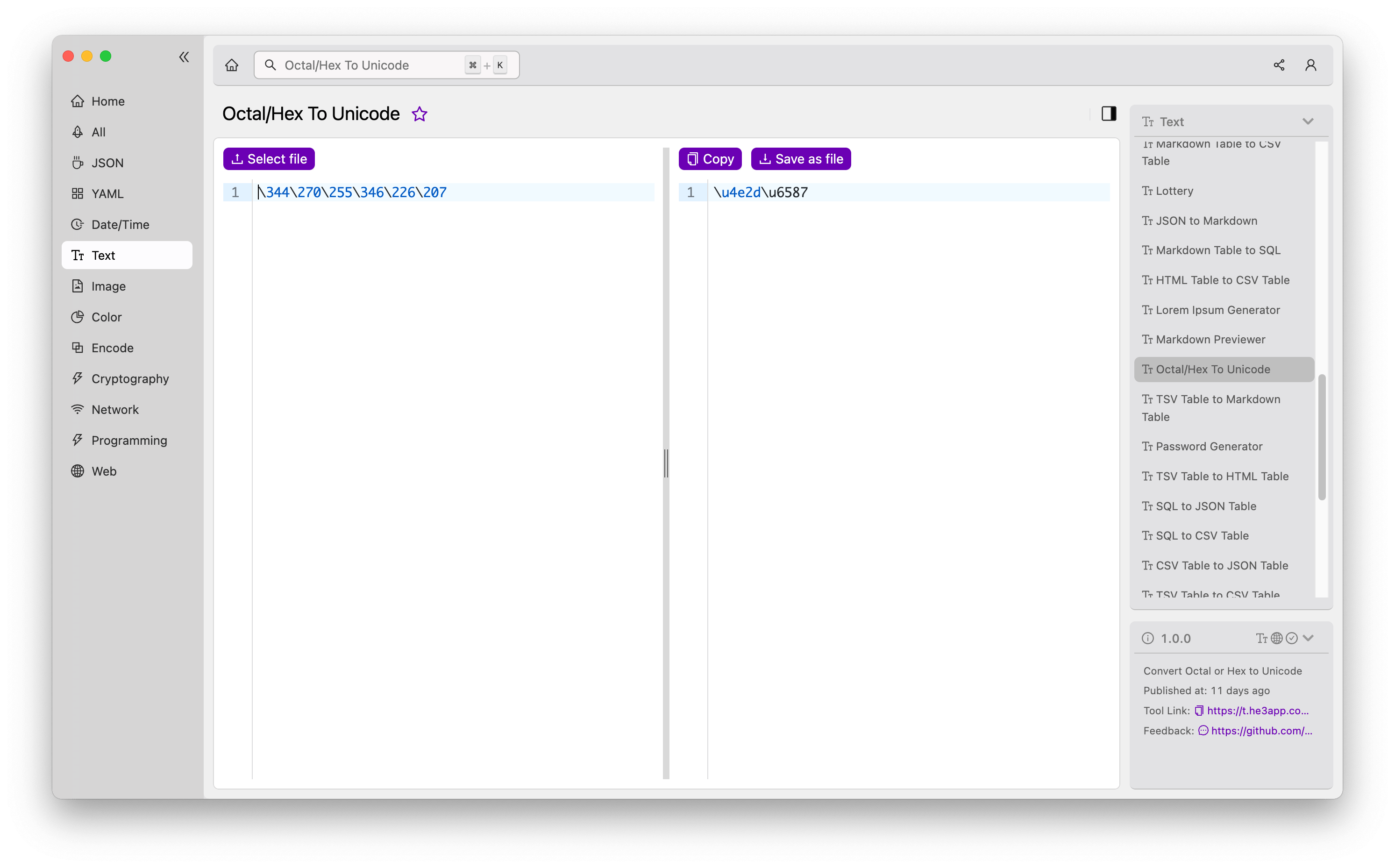As a developer, you may encounter situations where you need to convert Octal or Hex codes into Unicode characters. It might seem easy to do, but if you are not familiar with the concept, you might get lost. This article will clear everything up for you and show you how Octal/Hex To Unicode works.
What is Octal/Hex To Unicode?
Octal/Hex To Unicode is a type of conversion tool for developers that converts Octal or Hex codes into Unicode characters. Unicode is an industry-standard character encoding that assigns unique numbers to each character, making it possible for different devices and platforms to understand written text.
The Octal system is a base-8 numbering system that uses eight digits, and the Hex system is a base-16 numbering system that uses 16 digits. In contrast, Unicode is a standard character encoding that uses unique numbers to represent each character.
In summary, the Octal/Hex To Unicode tool is used to convert the Octal or Hex codes into Unicode characters, making it easier to transfer data between different devices and platforms.
How Octal/Hex To Unicode Works
Octal/Hex To Unicode works by taking a string of Octal or Hex numbers and converting them into their equivalent Unicode characters. The tool does this by mapping the numbers in the input string to the corresponding Unicode characters.
Let’s take an example. Suppose you have an Octal code “\345\263\277,” which represents the Chinese character “问” (wen), and you want to convert it into Unicode. In that case, you can use the following command in Python:
print('\345\263\277'.encode('utf-8').decode('unicode_escape'))This command prints the Unicode character “问” (wen) on the console.
Or you can use Octal/Hex To Unicode tool in He3 Toolbox (https://t.he3app.com?xwij) easily.

Scenarios of Use
Octal/Hex To Unicode can be used in many scenarios, such as:
- When transferring text data between different devices and platforms.
- When creating a multilingual website or application.
- When working with binary data files that contain Octal or Hex codes.
Key Features
Some key features of Octal/Hex To Unicode are:
- Handles both Octal and Hex codes.
- Can handle different character encodings, such as UTF-8, ISO-8859-1, and others.
- Can convert a single code or multiple codes at once.
- Works with different programming languages such as Python, Java, C++, and more.
Misconceptions and FAQs
Misconception: Octal and Hex codes are the same as Unicode.
This is not true. Octal and Hex codes are just different ways of representing Unicode characters. Unicode assigns a unique number to each character, making it possible to represent any character in any language.
FAQ 1: Can Octal/Hex To Unicode handle non-Unicode characters?
No, Octal/Hex To Unicode can only handle Unicode characters. If you need to work with non-Unicode characters, you need to use a different tool or library.
FAQ 2: Can Octal/Hex To Unicode handle Unicode in different character encodings?
Yes, Octal/Hex To Unicode can handle different character encodings. You just need to specify the correct encoding when decoding the input string.
Conclusion
Octal/Hex To Unicode is a useful tool for developers working with text data. It simplifies the process of converting Octal and Hex codes to Unicode characters, making it easier to transfer data between different devices and platforms. With this comprehensive guide, you now understand the concept and how Octal/Hex To Unicode works. For more information, you can refer to the Wikipedia links below:
